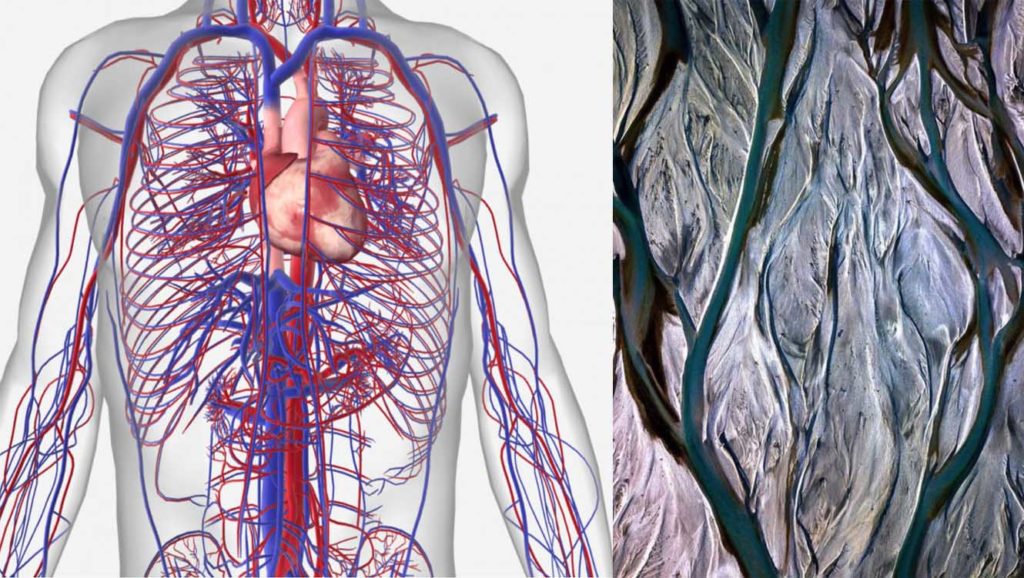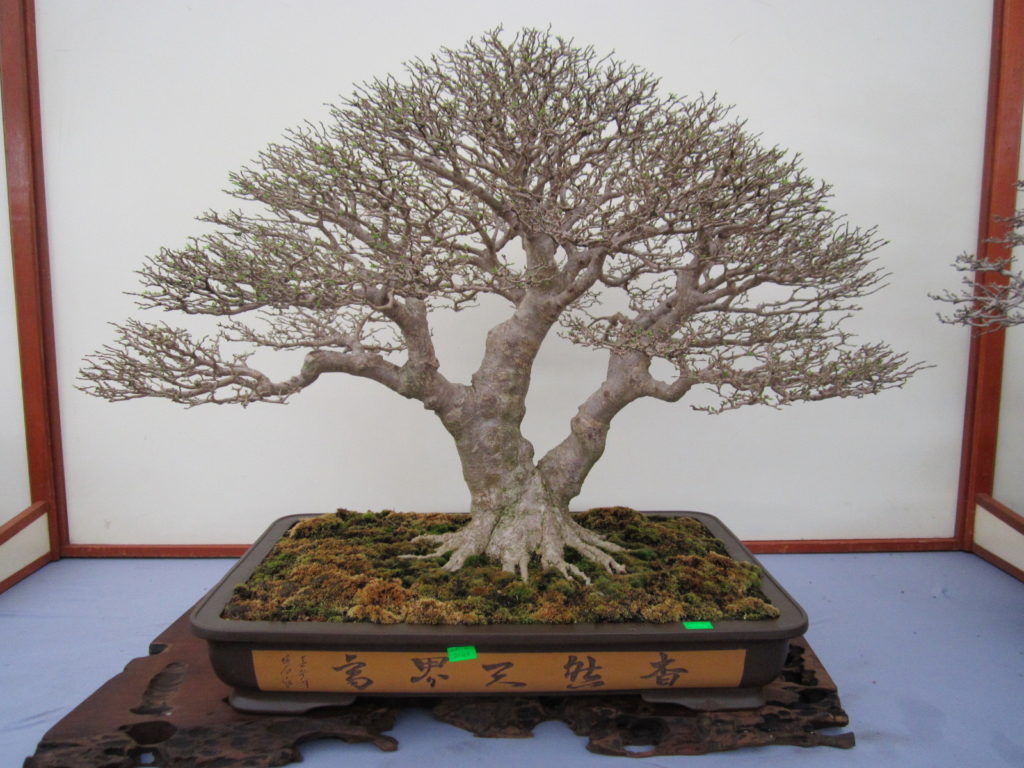
Most of us know that misdeeds can have ramifications, that is consequences, sometimes unexpected. But when I first encountered the word ramification applied to bonsai, the usage intrigued me. A little digging revealed “ramify” comes from the old French word “ramifier” which was from the Latin “ramification” meaning to form branches. Branches emerging from an action imply the consequences or paths a situation can take. This is why G.D. Campbell, the 8th Duke of Argyll, inThe Reign of Law wrote “Like all central truths, its ramifications are infinite”.
Ramification happens frequently in nature. From the blood vessels in the human body to river patterns, ramified networks surround us. The most obvious examples are full size trees. They use branch ramification to create maximum leaf coverage for photosynthesis.

For most bonsai designs, a fully ramified canopy is the ultimate goal. That is a network of reticulated branches that emerge from the main branches and get progressively finer. The branching need not be all that tidy or predictable – the more predictable the less natural a bonsai will look. But sometimes bonsai design doesn’t need to look natural. Techniques to get such a network vary based on the character of each tree species. Before we consider a couple of different techniques there are some general observations to understand how to ramificate.
- Good ramification has branches that taper
- One can assess the degree of ramification by counting how many times a branch forks from the main trunk. A highly ramified tree can have over 12 levels of branching
- Branching should be bifurcated, that is split into branches of two
- Detailed branching takes time and therefore adds value to a bonsai
- Generally one grows a branch to a certain length then cuts it at some point to get branches to form between the cut and the trunk
- The techniques described below all work because cutting the tip of a branch changes the chemistry of the hormones in the branch. It makes the tree send chemicals to energize dormant tissue closer to the trunk. Keep reading if you want more detail about this process, otherwise skip to the next bullet. OK I warned you. When plants produce shoots from buds, the production of these buds occurs from apical meristem tissues usually located at the base of stems. Cutting this apical tissues starts a complex hormonal regulation that usually involves auxin produced near growing tips, cytokinins that regulate cell divisions, and ethylene that induces shifts in metabolism as part of a stress response. Some trees make buds at leaf bases using intercalary meristem tissue. Others, such as Japan’s Black Pine, make buds only with apical meristem tissues. And some make buds along the lateral tree structure using lateral meristem tissue. Some trees use all three processes. When the meristem tissue gets enclosed in scale it is a proper bud. These appear as little bumps on the tree usually with the scales visible. Epicormic meristems, commonly called water sprouts, are not encased in bud scales and can appear anywhere on the tree. They can also keep pace with bark development and appear as a bump although usually not as obvious as a proper bud. Both types of tissue can create ramified branching.

- Defoliation does not speed up ramification development unless you also cut the apical tip.
- Cutting the apical tip can also reduce leaf size as when the tree makes new leaves it is splitting its energy among more leaves than before apical tip cutting.
- Wait for a branch to lignify before of the cutting of the apical bud. For better taper let the branch extend awhile causing the shoot to thicken.
- These techniques also apply to roots. Ramified roots add to the appeal of a bonsai.
Here are some techniques to ramificate based on the tree’s morphology.
Alternate leafed trees that back bud readily – For example a ficus or an elm. The ramification technique entails letting the branch extend and get fat at the base, then cutting it back to a shorter length. How short depends on the design and the height of the tree. Jim Smith was famous for cutting all branches back to only an inch of two. His goal was to build severe taper in addition to ramification. Latent buds between the cut and the trunk will form at any remaining leaf or branch base or from adventitious buds along the trunk. The bud at the last leaf union near the cut will start the process. This leads to the directional pruning technique.

Paired Leaf Trees that bud back readily – Maple are the classic paired leaf bonsai but a better example for us BSOBers is the Water Jasmine, Wrightii Religiousa. Cutting to a lignified paired leaf branch will cause the tree to bud at the last paired joint. A bonus is sweet smelling flowers also appear at this union. Some latent buds or adventitious buds can occur but the paired leaf unions are more reliable. These branches will naturally be bifurcated making branch selection simpler. Water Jasmine is also notorious for forming water sprouts at the trunk to root union. Trim these as they appear as they do not assist in ramification development.

Compound leafed trees – like a Bald Cypress or a Brazilian Raintree. For purposes of ramification you can consider the compound leaf like a single leaf. Cutting a lignified branch will energize the buds at the last remaining leaf or branch stem. However adventitious buds along the branch or trunk may also sprout. Bald Cypress are reliable back budders. The Raintree will back bud but not as vigorously as the cypress.
Australian Pine – this is a strange tree in that it has photosynthetic bark in addition to nearly microscopic photosynthetic leaves. Therefore any shoot can become a branch. Cutting a lignified branch will cause apical meristem buds as well adventitious buds between the cut and the trunk to spout. The rate at which this species does that means one can develop bonsai very quickly with simple clip and grow technique.

Japanese Black Pine – these trees don’t usually develop latent or adventitious buds. Therefore the branch cutting has to happen at a time when the candles (the shoot extension where the apical meristematic tissue is ) are active. The apical meristem tissues in the candle forms new buds, usually in circle around the cut candle. Timing is everything with these trees. You have to catch the candles as they are extending. Occasionally you can get adventitious buds to form nowhere near the cut candle but not reliably. For getting branches closer to the trunk grafting is needed.
Knowing how your tree responds to cut tips will enhance your ability to get a ramified canopy. Study the trees’ responses to your pruning. Over time you will notice the patterns and then can tailor that to your design work. These consequences will be good for your tree’s development and good for you as working on ramification will minimize your misdeeds and time in that 16th century Italian prison.
